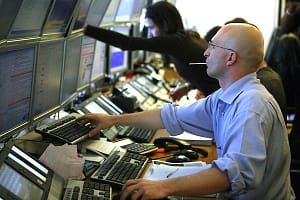Competition in the restaurant business can be tough; even at the best of times. Right now, economic uncertainty coupled with chronic financial pressures is a growing concern, and without a clear-cut Brexit deal in sight, there’s still no knowing which way the wind will blow for even the most successful of restaurant chains.
Data from Price Bailey showed a significant increase in UK restaurant insolvencies in 2018, up 40% from 2017. That works out to four establishments closing their doors every day. In addition to Brexit, increased business rates, untenable labour costs and waning consumer confidence are just some of the interrelated factors responsible for the current situation.
Given this difficult environment, how can restaurants strengthen their position to not only remain in business, but stand out and excel in a crowded market?
Reduce operating costs
The rise in business rates and property rental prices over the last few years has made it prohibitively expensive for many restaurateurs to run multiple physical locations. There is some planned relief for smaller businesses, but mid-market and larger restaurant chains are heavily affected. Add a bad Brexit deal to the mix and restaurants will also have to factor in increased food and ingredient costs, as well as limited access to labour from the European Union (EU).
There is not much restaurants can do to influence tax, property prices or Brexit policy in their favour. What they can do is look for cost-effective ways to mitigate the impact. Some chains have adopted an extreme approach, opening up ‘dark kitchens’ to cater to the delivery market in certain areas with enough demand.
Customers can order food using a delivery app, but there is no actual physical restaurant in which to eat, reducing operational costs significantly. However, this is not a viable solution for most chains. Instead, casual dining restaurants should consider advanced POS systems that can integrate with popular delivery apps to ensure they can process delivery orders seamlessly, while simultaneously meeting the needs of customers who are dining in.
With regards to increasing food costs, restaurants can modify their menus and, very importantly, reduce wastage. Food wastage is typically caused by poor communication between the waiting staff and kitchen staff, resulting in food order processing errors. Self-service and electronic point-of-sale (EPOS) systems can help ensure that orders are processed correctly. Point-of-sale and kiosk systems with features like conversational ordering and restaurant specific workflows mean that orders are more likely to be processed exactly to a customer’s order.
What’s more, with built-in inventory management features, these systems can also help managers stay on top of their stock so that they don’t run out of menu items and face the negative consequences, such as poor customer satisfaction and reduced sales.
Augment your staff
Currently, about three million of the UK’s restaurant and hospitality workers are from the EU. A decline in the access to this labour will likely push staff costs up. Technology presents a number of solutions but, to be clear, it cannot yet completely replace humans. So, for all those restaurateurs day-dreaming of robot waitrons, cool your jets. However, what advances in automation and, to a certain extent, artificial intelligence (AI) can do is improve the efficiency of human staff.
The human elements of the restaurant business are still key to delivering a memorable dining experience. Establishments that balance the ‘human touch’ with relevant technologies can benefit from enhanced productivity and greater customer satisfaction. By automating routine, manual processes like food orders and payments, waiting staff can focus on ensuring that diners are happy, comfortable and have everything they need.
Food orders are becoming increasingly personalised: “I’d like the Full House Burger with a seeded, gluten free bun, no butter, no mayo, vegetarian bacon instead of bacon, hold the cheese and give me a Quorn patty.” Letting a machine process orders frees up human headspace and time to maximise customer satisfaction and deliver a superior dining experience. Tableside ordering tablets, for example, literally put food-ordering control into the customers’ hands. This makes for positive human engagement, driving loyalty which is crucial for sustaining business in the long-term.
It’s a bit of a shift in thinking for restaurant managers. Instead of instructing staff to memorise specials and scribble down orders, often with important details falling through the cracks, they can meet and greet diners, guide their experience, answer questions, and keep the place clean. These have always been important tasks, and this hasn’t changed in fact, their value has, if anything, increased as businesses compete for similar customers.
Adapt to change
An uncertain economy has wide repercussions. Customer confidence is waning, pushing people to save rather than spend. As for eating out, this is perceived as a luxury activity that, as experiences go doesn’t always deliver good value for money. A report from Sacla says the millennial demographic is particularly price and experience conscious: millennials only dine in 42% of the time when ordering from restaurants and 35% say that coupons and discounts influence where they purchase food.
The cost of eating out is a really important consideration. And this relates not just to the price of the meal, but to the whole dining experience. Good food and excellent service are non-negotiables – the challenge now is for restaurants to up the ante and provide a more experiential dining experience. Confidence may be low, but if people are offered a great experience that’s worth their money, they’ll get up, leave the house and eat out rather than order in.
Cater to different tastes
When someone is considering eating out, a restaurant’s menu obviously plays an important part in their decision-making process. The challenge here for restaurants is to keep up with changing customer tastes and preferences and adapt accordingly. Veganism, for example, is growing in popularity as the price of meat rises and people are becoming more environmentally aware.
Of course, that doesn’t mean the meat-eaters have gone underground. It just means that to remain relevant, restaurants need to cater to different tastes, be they ideological, wallet or health-related. Developing an attractive menu is the first step. Keeping the kitchen stocked with enough of everything is an ongoing requirement that doesn’t have to depend on guesswork.
Balancing stock supplies and customer demands is crucial to remaining operationally effective. By using restaurant management mobile apps, key decision makers can collect data about sales and customer habits, restaurants can track how their menu items perform, stay on top of their inventories and make sure that they are a) offering people the food they want and b) never run out crucial ingredients. Not only does help retain loyal diners, it helps them develop a great reputation that helps them win new ones.
Modern restaurants simply can’t sit still and wait for the Brexit blues to pass. Times are changing, and competing in a fast-moving, but uncertain market requires some creative thinking and agile action. Hitting the sweet spot between human service and technological support is crucial for restaurants looking to make it in 2019 and beyond.






Leave a Comment